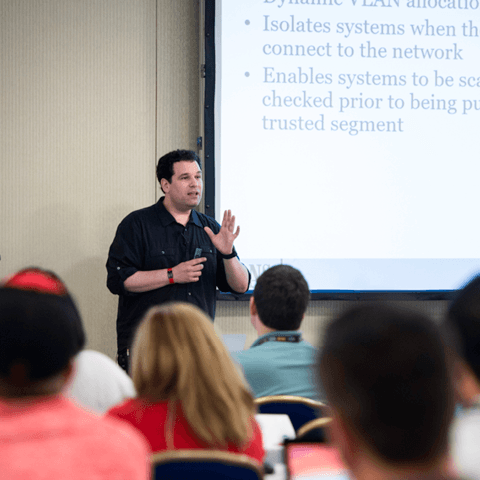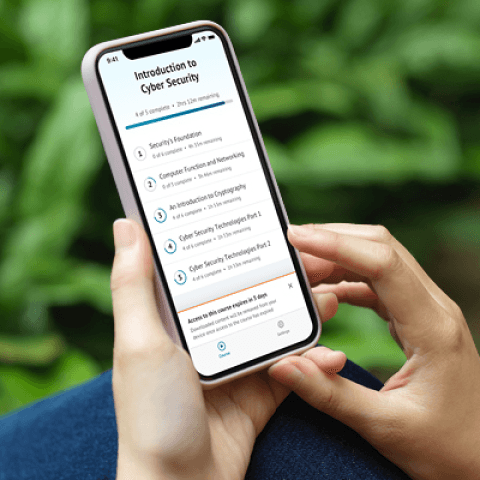SEC595: Applied Data Science and AI/Machine Learning for Cybersecurity Professionals


Experience SANS training through course previews.
Learn MoreLet us help.
Contact usBecome a member for instant access to our free resources.
Sign UpWe're here to help.
Contact UsApply your credits to renew your certifications
Attend a live, instructor-led class at a location near you or remotely, or train on your time over 4 months
Course material is geared for cyber security professionals with hands-on experience
Apply what you learn with hands-on exercises and labs
Build real-world web app offensive skills with a hands-on, repeatable process for finding, exploiting, and clearly proving the vulnerabilities that matter.
This course was especially valuable to me because it bridged the gap between theory and practical application. The hands-on labs, in particular, stood out; they closely simulated real-world scenarios and helped me build confidence in applying the techniques during actual penetration testing engagements at work.
If an organization does not properly test and secure its web applications, adversaries can compromise critical systems, steal data, disrupt operations, and trigger regulatory fallout. Many still rely only on vulnerability scanners and assume these tools will reliably uncover real-world flaws.
SEC542 shows you how to move beyond push-button tools and perform focused, high-value web application penetration tests. You will learn a repeatable methodology to assess both Internet-facing and internal business applications that support sensitive workflows and data.


Eric Conrad, a SANS Faculty Fellow and course author, has 28 years of information security experience. Eric is the CTO of Backshore Communications and his specialties include Intrusion Detection, Threat Hunting, and Penetration Testing.
Read more about Eric Conrad

Timothy McKenzie redefined offensive security through decades of Red and Purple Team operations, advancing the industry’s threat simulation standards and influencing thousands of cybersecurity professionals with his adversary emulation strategies.
Read more about Timothy McKenzie

Bojan Zdrnja is a globally respected cybersecurity expert and CTO at INFIGO IS, renowned for his leadership in offensive security, red teaming, and his extensive contributions to the SANS Internet Storm Center and European cybersecurity initiatives.
Read more about Bojan ZdrnjaExplore the course syllabus below to view the full range of topics covered in SEC542: Web App Penetration Testing and Ethical Hacking.
This first section of the web application penetration testing course covers essential techniques such as interception proxies, HTTP basics, information gathering, virtual host discovery, target profiling, HTTPS testing, and content spidering. Labs include configuring Burp Suite and conducting thorough assessments.
Section 2 focuses on advanced web application security techniques, including fuzzing for vulnerability detection, information leakage analysis, and using Nuclei and Burp Suite Pro scanners. It also covers forced browsing for content discovery, API exploitation, various authentication methods, and federated identity protocols.
This section moves from username harvesting and blind password spraying through session management and authentication and authorization bypass, then into stored, reflected, and DOM-based XSS, payload construction, data exfiltration, and browser exploitation using tools such as Burp Suite, ffuf, DOM Invader, and BeEF.
Students progress from prototype pollution and database injection (SQL and NoSQL) through command injection, SSRF, and XML external entities, learning to move from input-level flaws to full data access and system impact using tools like Burp Suite and sqlmap.
This section advances from insecure deserialization, file inclusion, Python automation, SSTI, CSRF, and file upload exploitation to Metasploit-driven post-exploitation and the business side of penetration testing, tying technical attacks to logging, logic flaws, LLM risk, and reporting.
During section six, students compete in teams in the ranges.io platform, a powered web application penetration testing tournament. This Capture-the-Flag exercise lets them wield new or sharpened skills to answer questions, complete missions, exfiltrate data, and tackle progressive challenges with hints that support all skill levels and reinforce learning.
This role tests IT systems and networks and assesses their threats and vulnerabilities. Find the SANS courses that map to the Vulnerability Assessment SCyWF Work Role.
Explore learning pathResponsible for analyzing the security of new or existing computer applications, software, or specialized utility programs and delivering actionable results.
Explore learning pathResponsible for the secure design, development, and testing of systems and the evaluation of system security throughout the systems development life cycle.
Explore learning pathResponsible for assessing systems and networks to identify deviations from acceptable configurations, enclave policy, or local policy. Measure effectiveness of defense-in-depth architecture against known vulnerabilities.
Explore learning pathCollaborates to identify access and collection gaps using cyber resources and techniques to penetrate target networks and support mission operations.
Explore learning pathApplication penetration testers probe the security integrity of a company’s applications and defenses by evaluating the attack surface of all in-scope vulnerable web-based services, clientside applications, servers-side processes, and more. Mimicking a malicious attacker, app pen testers work to bypass security barriers in order to gain access to sensitive information or enter a company’s internal systems through techniques such as pivoting or lateral movement.
Explore learning pathCoordinates cyber operations plans, working with analysts and operators to support targeting and synchronization of actions in cyberspace.
Explore learning pathResponsible for developing, creating, modifying, and maintaining computer applications, software, or specialized utility programs.
Explore learning pathAdd a GIAC certification attempt and receive free two practice tests. View pricing in the info icons below.
When purchasing a live instructor-led class, add an additional 4 months of online access after your course. View pricing in the info icons below.
This course taught me to truly focus on the methodology while performing a pen test. During the Capture the Flag event, I realized how much time can be wasted if you fail to respect your methodology.
As a developer, SEC542 is exactly the kind of course I needed. It showed us what the bad guys look for, which helps protect our software.
SEC542 provides rapid exposure to a variety of tools and techniques invaluable to recon on target site.

Get feedback from the world’s best cybersecurity experts and instructors

Choose how you want to learn - online, on demand, or at our live in-person training events

Get access to our range of industry-leading courses and resources